Tips From Sticks-In-The-Mud Woodshop
by Jim Randolph
Long Beach, Mississippi
Click on any picture to see a larger version.
Welcome to "Tips From Sticks-In-The-Mud Woodshop." I am a hobbyist, not a professional, someone who loves woodworking, just like you do. I have found some better ways to accomplish tasks in the workshop and look forward to sharing those with you each month, as well as hearing your problem-solving ideas.
Tip #1
By now, regular readers know that I am the CFL's biggest fan. No, not the Canadian Football League; compact fluorescent lights.
(CLICK HERE
to read our earlier post on CFLs.) They are perfect for vibrating machines like grinders and drill presses.
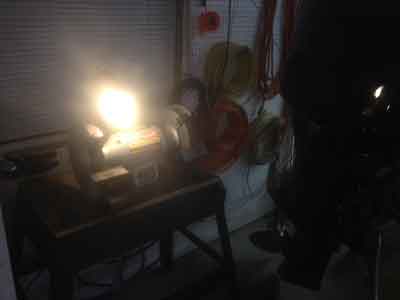
|
|
A grinder good enough to sharpen chisels and turning tools
won't have much vibration, but this little do-anything,
abuse-the-wheel grinder rattles pretty good!
Even with rough jobs like grinding a pin or sharpening
a mower blade, you need a good, bright and reliable light.
|
An incandescent bulb not only generates a lot of heat, the hotter the filament gets, the more likely the filament is to break. CFLs don't have a filament; they generate light by electrifying a gas. I like the 6500 Kelvin "daylight" bulb. Its place in the light spectrum really illuminates your task and the 75 watt-equivalent is enough light for any job.
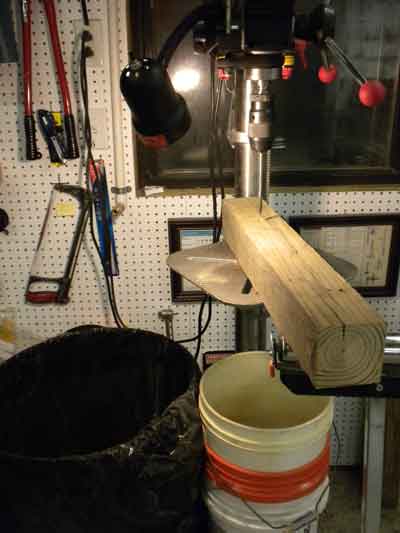
|
|
No decent drill press has much vibration, but a bright CFL
is still a good choice for illuminating your bandsaw work.
Notice the 5-gallon bucket under the drill press,
which helps mitigate some of your cleanup work.
|
Another handy use for low-power CFLs is as indicators. When I turn on the air compressor or throw the switch to power up the cyclone, I plug in a 10-watt CFL beside the breaker box.
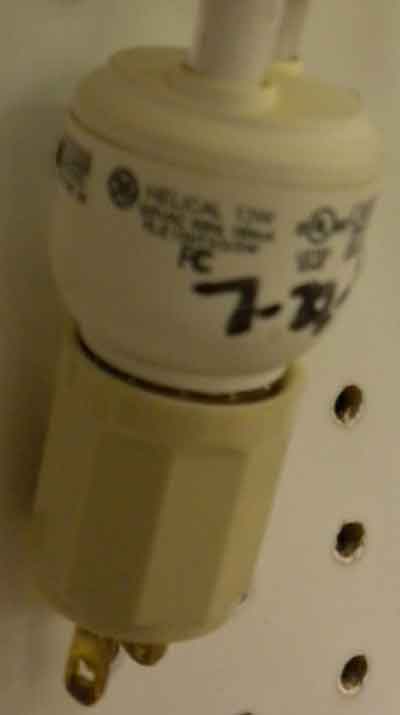
|
|
These little adaptors sell for about $3.00 each. You can
screw any size standard-based bulb into it, allowing you
to have a light anywhere you have an outlet.
I like to put the installation date on light bulbs and
batteries to know how long they last.
It's easy to remember once you get into the habit.)
|
When I quit for the night it gets my attention and reminds me to turn off the air compressor so that a broken hose or blown pipe won't cause the compressor to run and run until it burns up. The Oneida cyclone has an RF-activated remote control. Leaving the power applied to it could cause a stray RF signal to start it up, causing unnecessary wear.
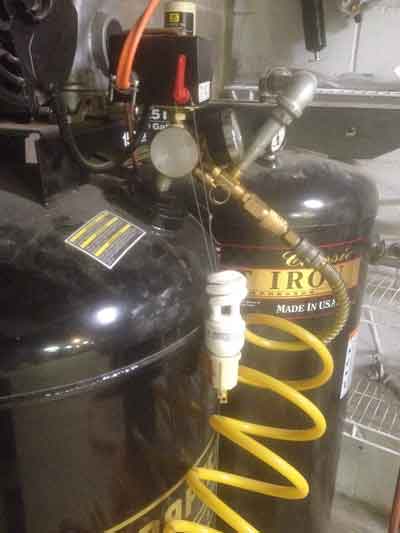
|
|
This bulb and its adaptor hang on the air compressor switch.
Thus, it is handy when I turn on the compressor or energize
the dust collector circuit.
|
Plugging in the "indicator" CFL when I turn on the breaker ensures that the breaker will get turned off again when the workday is over.
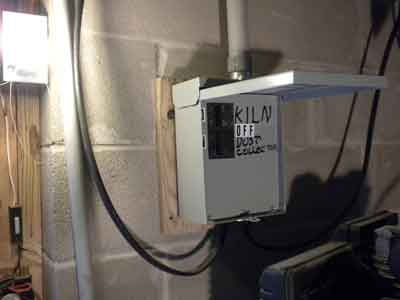
|
|
A quick glance around the shop at the end of a work session
and this light will catch your eye, reducing the likelihood that
the air compressor or dust collector circuit remains energized.
|
It drives my wife crazy when I unlock the door to the shop and forget to lock it back. There is an outlet next to the door, so I plug in a little CFL that reminds me to lock up before I go upstairs.
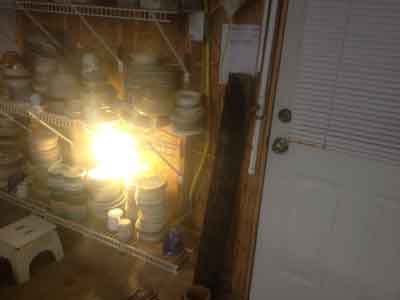
|
|
"Happy wife, happy life!" I was on the planet six decades
before I heard that saying the first time. Credit Matt VanDerList,
of Matt's Basement Workshop. This light reminds me
to lock the back door before ending a shop session,
which gives my wife peace of mind.
|
Tip #2
No Southern-fried Southern boy wants to be called a Yankee, but we share the characteristics of shrewdness and thrift. Thus, each month we include a money-saving tip. It's OK if you call me "cheap."
Trash cans: This tip was inspired by Steven Johnson's story of changing the location of his trash can.
Click here to read Steve's story.
Can. Singular. One. I have ten (10) in the shop. At least, that's how many I can count in my head, as I'm sitting in an airport waiting for a plane to take me to visit my mother. I do have only one recycle bin, so when I generate paper, plastic, or other recyclables, I usually make a pile in the floor and take the pile all at once to avoid multiple long walks to the bin
Interesting how I got to have so many garbage cans. I never buy them. Every one of my curbside-sized garbage cans was a freebie. My one-way commute each day is about 25 minutes. Along the side of the road you can find anything you ever wanted and a whole bunch of stuff you don't. One simply must take care when stopping to avoid being run over or causing an accident. Also, don't think, "I'll just pick that up on my way home tonight." I've missed out on some choice cast-offs by making that mistake. Clearly, I'm not the only roadside scavenger out there!
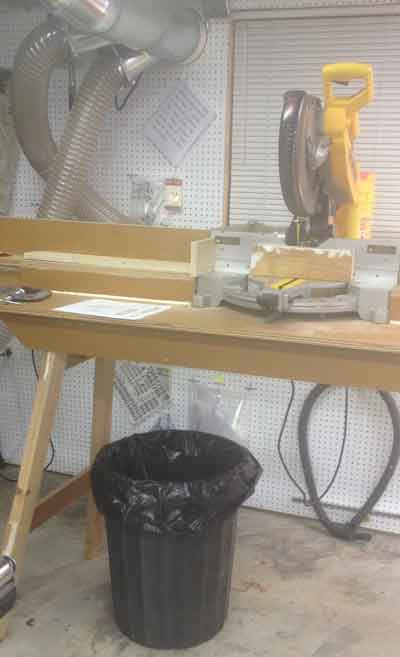
|
|
Behold: The humble trash can. You can pick up a heavy-duty
one like this for about $30 at the store.
Or, free on the side of the road. Your choice.
|
Jim Randolph is a veterinarian in Long Beach, Mississippi. His earlier careers as lawn mower, dairy farmer, automobile mechanic, microwave communications electronics instructor and journeyman carpenter all influence his approach to woodworking. His favorite projects are furniture built for his wife, Brenda, and for their children and grandchildren. His and Brenda's home, nicknamed Sticks-In-The-Mud, is built on pilings (sticks) near the wetlands (mud) on a bayou off Jourdan River. His shop is in the lower level of their home. Questions and comments on woodworking may be sent to
DrRandolph@MyPetsDoctor.com
. Questions about pet care should be directed to his blog on pet care,
www.MyPetsDoctor.com
. We regret that, because of high volume, not all inquiries can be answered personally.
Return to
Wood News
front page


